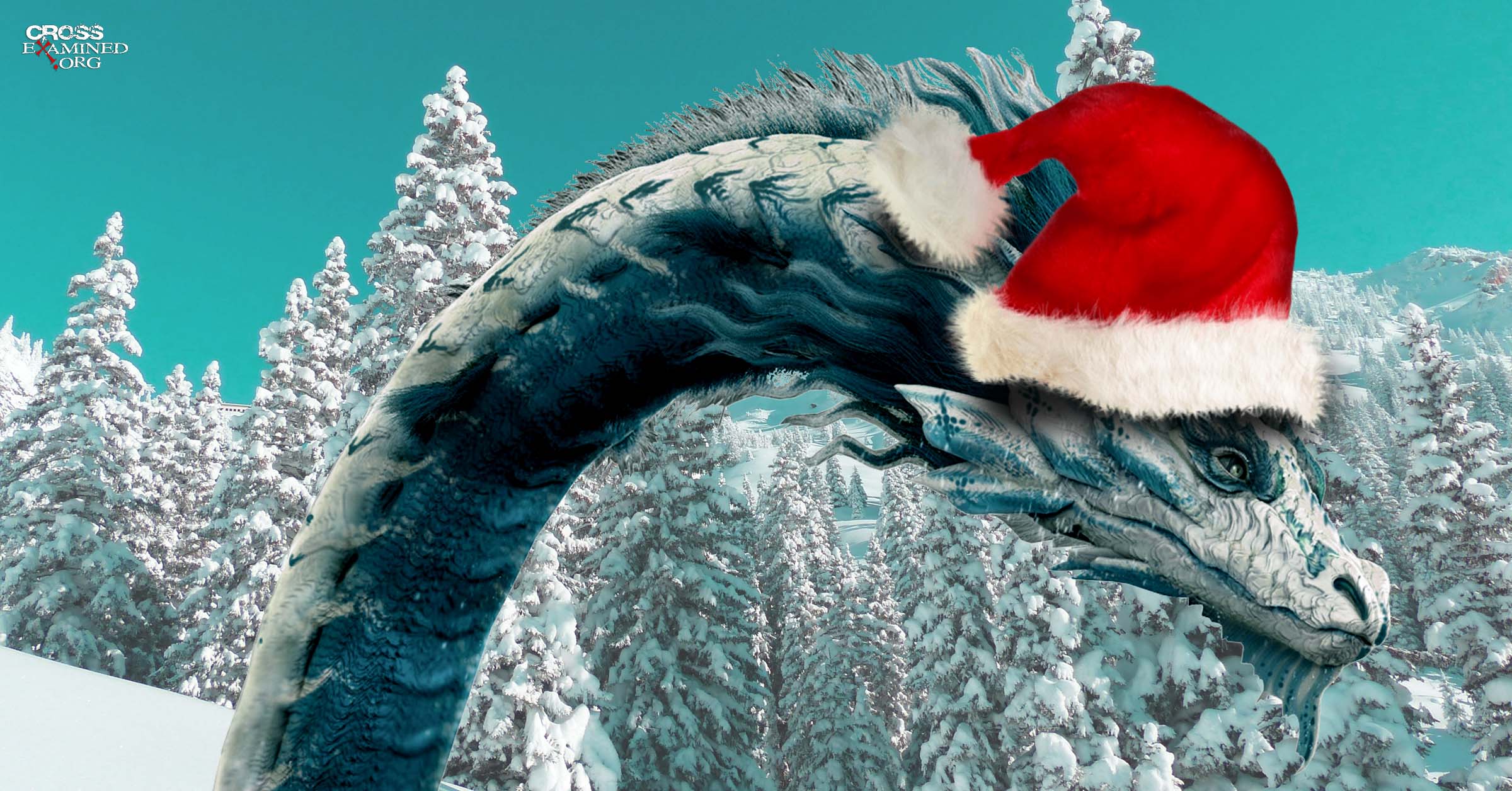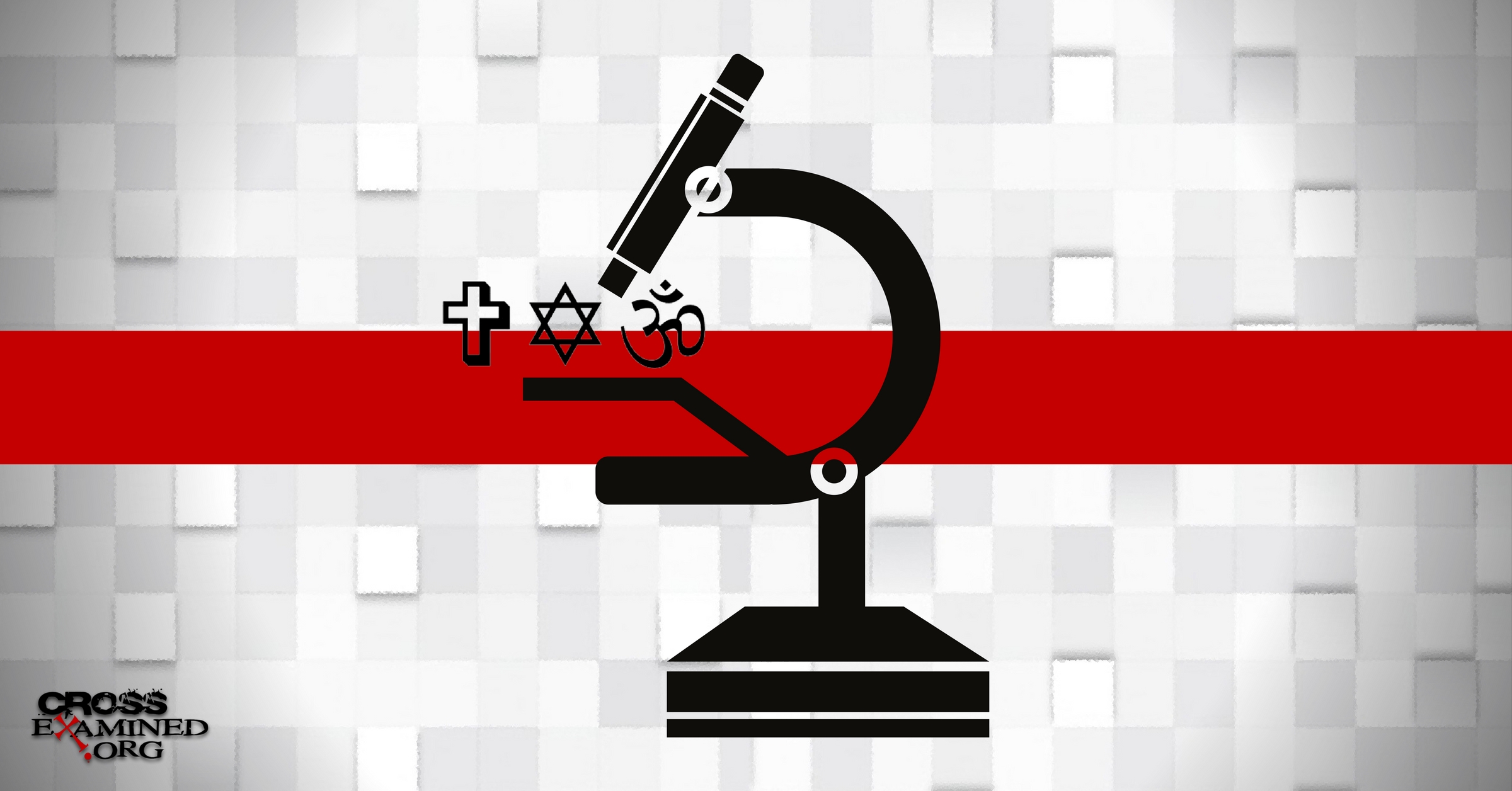A Dragon at Christmas
“Away in a manger no crib for a bed, the little Lord Jesus laid down his sweet head. The stars in the sky looked down where he lay, the little Lord Jesus asleep on the hay. The cattle are lowing, the baby awakes. But little Lord Jesus no crying he makes. . .”
What a peaceful scene. It’s as every Christmas card portrays it. Sweet baby Jesus cooing softly in his manger with smiles all around. The only problem is that it doesn’t portray reality. Aside from the point that Jesus most certainly would have been crying as any normal baby would, Revelation 12 describes the Christmas story as a dangerous event, loaded with spiritual warfare.
The Dragon Fights
Chapter 12 is a prime example that Revelation does not record history chronologically. As I’ve argued previously,[i] Revelation provides several complementary, parallel visions. In this way, several of the visions recapitulate, or retell, the same story from slightly different angles. I made this point specifically with the seven seals, trumpets, and bowls.[ii]
Chapter 12 stands as a unique chapter in that it speaks of the incarnation. In verse 1, John describes a vision of a woman dressed in the sun, standing on the moon, and wearing a crown of twelve stars on her head. Scholars debate the identity of the woman. I think one can make a good case that she represents the people of God, though some argue for Mary. The cosmic images demonstrate the exalted status of this figure, especially the crown of twelve stars on her head. We read elsewhere in Revelation that God made his people rulers (Rev 1:6; 5:10; 20:6). And the number twelve symbolically represents the people of God (twelve tribes and twelve apostles).[iii]
Verse 2 notes that the woman was pregnant and in labor. Repeatedly throughout the OT, we read that Israel suffers labor pains before their Messianic salvation comes (Isa 26:17-18; 66:7-10; Mic 4:10). At the same time, a great red Dragon with seven heads, ten horns, and seven diadems on its heads swept down a third of the stars of heaven to the earth. The dragon is a clear reference to Satan (Rev 12:9; 20:2).
The dragon attempts to mimic Jesus who also has horns and diadems (Rev 5:6; 19:12). We read later in Revelation 17:12 that the ten horns represent ten earthly kings. In other words, the Dragon accomplishes his evil schemes through earthly kingdoms and rulers.[iv] And though many think the stars represent angels, most likely the stars represent people as they did in Daniel 8:10 when Antiochus Epiphanes also threw down “stars.” In other words, John appears to making the same point Daniel was making: the enemy will persecute God’s people.
Meanwhile, the woman gives birth to a son. And not just any son, but a son who will rule the nations with an iron staff. This language most certainly refers to Psalm 2:9: “You shall break them with a rod of iron.” This Psalm, which speaks of the Lord’s “anointed” (the Messiah), also says of the anointed, “You are my Son; today I have begotten you” (Ps 2:7). This son is none other Jesus of Nazareth who would bring blessing to the nations (Gen 12:3).
And how would he bring blessing? Verse 5 says that the child was “caught up to God and to his throne.” That is to say, even though the dragon sought to devour this male child, he would triumph over the dragon by means of his resurrection and ascension to the right hand of the Father.
And though Christ defeated Satan, the dragon continues to fight against God’s people while he still can. We read in verse 6 that the woman flees into the wilderness for 1,260 days (3.5 years). There in the wilderness, God nourishes his people, just as he did ancient Israel.
While scholars differ on their interpretation of the 1,260 days, I believe they represent the time span between Christ’s resurrection and eventual return. The time of 1,260 days most likely comes from Daniel 9:27 which prophesies that sacrifices will end for “half of a week.” A week in that context referred to seven years. So half of a week refers to forty-two months or 1,260 days.
Daniel, it seems, was prophesying that Christ’s future death would bring sacrifices to an end for the final 1,260 days which symbolically represents the time between Christ’s two comings. In chapter 11, we read that enemies will trample the people of God for forty-two months (1,260 days). And it’s during this 1,260 days that the two witnesses (the church) will prophesy to the world. Each of these texts supports the idea that 1,260 days refers to the present church age.
The Dragon Falls
While some want to locate the fall of Satan and his angels from heaven before the dawn of the human race, the context goes against this position. True to apocalyptic form, this vision pulls back the curtain to give us a glimpse of a cosmic battle between the dragon and Michael. Michael represents the people of God and overpowers the dragon, casting him down to the earth.
Verse 9 notes that “the great dragon was thrown down, that ancient serpent, who is called the devil and Satan, the deceiver of the whole world.” Certainly, these images allude back to the serpent in the garden (Gen 3), the Leviathan (Job 41:1; Isa 27:1), Rahab (Job 26:12), and the sea monster (Ps 74:13; Ezek 29:3). Each of these serpent creatures (snakes and sea monsters) represent Satan’s opposition to God’s people.
We read that the dragon and his angels are expelled from heaven because of “the blood of the Lamb and by the word of their testimony.” It seems, then, that Satan used to stand before God and accuse people of their sin (Job 1:9; Zech 3:1). But Christ’s substitutionary death silenced the accuser![v] Satan, therefore, is cast out of heaven, and is further defeated by the proclamation of the gospel. God’s people continue to proclaim the message, even though they suffer for it.
Though the dragon has been defeated, he doesn’t just lay down. He takes down as many as he can with him.
The Dragon Flails
Though Satan fell to earth, he continues to wage war on the woman and her “offspring.” While some may want to distinguish between these two, I think its best to read them as referring to the same entity—the people of God. If one wants to parse them out, one could possibly think of the woman as the church and the offspring as individuals of the church.
As the dragon seeks to attack the church, we read that God delivers them on the wings of eagles into the wilderness, just as he did at the exodus (Exod 19:4). Again, we read that God nourishes his people in the wilderness for “a time, times, and half a time.” This phrase is just another way of saying 3.5 years or 1,260 days. As I already stated earlier, this time frame represents the span of time from Jesus’ resurrection[vi] till his return. That is to say, it’s during this current church age that God is protecting his people from Satan’s attacks.
At the same time, Satan continues to attack the church. He continues to accuse, though he cannot accuse legitimately now that Christ has died. His only recourse is to lie. It’s imperative, therefore, that believers constantly remind themselves of the gospel as to fight off Satan’s accusations. Though Satan continues to wage war, God will ultimately protect his people and bring them safely home.
The Dragon-Slayer
The story of the Bible, then, proclaims that Jesus came as the seed of the woman to crush the head of the serpent.[vii] All throughout Scripture, we see hints of the dragon’s opposition through individuals like Pharaoh, Goliath, King Herod, and the Jewish leaders. But as we see here in Revelation 12, it was really the great serpent pulling the strings. And while this dragon may be a fierce enemy, he is no match for the great dragon-slayer Jesus.
We read of the dragon’s ultimate demise in Revelation 20:2-10, “And he seized the dragon, that ancient serpent, who is the devil and Satan, and bound him for a thousand years, and threw him into the pit, and shut it and sealed it over him so that he might not deceive the nations any longer, until the thousand years were ended. . . . And the devil who had deceived them was thrown into the lake of fire and sulfur where the beast and the false prophet were, and they will be tormented day and night forever and ever.”
Footnotes
[i] https://ryanleasure.com/reading-revelation/
[ii] https://ryanleasure.com/seals-trumpets-and-bowls-oh-my/
[iii] https://ryanleasure.com/who-are-the-144000-in-revelation/
[iv] https://ryanleasure.com/the-seven-churches-in-revelation/
[v] https://ryanleasure.com/what-did-the-cross-accomplish/
[vi] https://ryanleasure.com/jesus-brother-james-and-the-resurrection/
[vii] https://ryanleasure.com/serpents-dragons-and-the-bible/
Recommended resources related to the topic:
Early Evidence for the Resurrection by Dr. Gary Habermas (DVD), (Mp3) and (Mp4)
Cold Case Resurrection Set by J. Warner Wallace (books)
_____________________________________________________________________________________________________________________________________________________
Ryan Leasure holds a Master of Arts from Furman University and a Masters of Divinity from the Southern Baptist Theological Seminary. Currently, he’s a Doctor of Ministry candidate at the Southern Baptist Theological Seminary. He also serves as a pastor at Grace Bible Church in Moore, SC.
Original Blog Source: https://bit.ly/3VKGTtY











